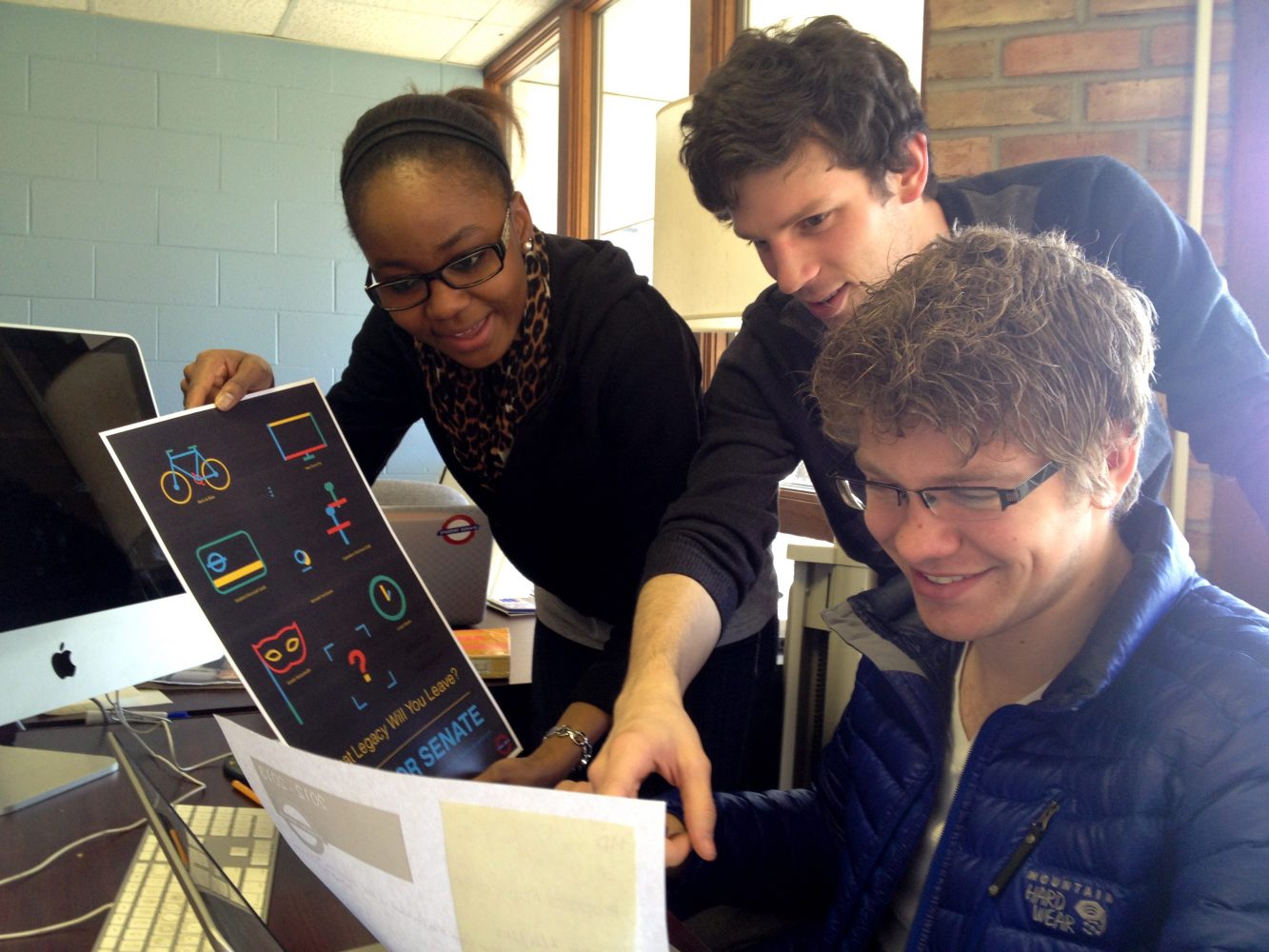From March 4 to March 10, the Calvin Student Senate put on the #WeAreCalvin project. The project was a way for students to participate in the prioritization of college resources over the next five years. The initiative had considerable institutional backing, but it failed to prompt representative student participation.
The idea was simple. Take a photo, upload and hashtag it and let people vote. More votes meant more student body value.
Yeaji Choi, the student senate president, said on the Calvin website, “We felt that social media was an easier way for students to interact with one another.”
The project leveraged the wide reach of social media platforms such as Facebook, Twitter and Instagram to rally student involvement. Senate would then take the top 25 most voted-for photos and pass them on to the planning and priorities committee, which is in charge of long-term financial planning for the college.
On Monday, March 4, the project took off.
Senate circulated #WeAreCalvin t-shirts, buttons, posters, cards and dining hall table markers. The senate Facebook page featured a video of President LeRoy encouraging students to participate.
By Wednesday night, around 70 photos had been posted with the “WeAreCalvin” hashtag.
The next day, on March 7, professors read a mandatory announcement in class from the Provost’s office, urging students to upload and “like” more pictures.
At 12:00 p.m. on March 10, Senate closed the voting for the #WeAreCalvin project.
At final count, the top entry posted by “Drew” had 102 votes. His picture featured a group of Calvin students cheering at an event, and read, “Proud to be part of this team.”
“Rachel”’s “We love the SPAUD program!” came in second place. It had 76 votes, an even more surprising statistic considering that speech pathology and audiology students make up only 4 percent of the student body.
The rest of the top ten entries represented a variety of interests. “Lori” held up a fanned stack of tickets from the concerts, movies and sporting events she had attended at Calvin. “Clair” entered a photo of her “planking” in the library. “Rok Dam” and “Connor” spotlighted Calvin staff members, Rikako and Patsy, respectively. “Nathan” uploaded a picture of two men at a urinal holding books, “engaging in all things.” The remainder presented group interests such as women’s rugby and off-campus programs.
If the senate carries on with its plan, these entries will be presented as the interests of the student body — sports to SPAUD to urinals. Yet a photo with 102 votes is hardly representative of a student body of 4,008 students.
Senate’s strategy counted on the wide reach of social media platforms, coupled that with extensive advertising, and wagered on a broad response.
It is fair to say that student participation for this survey was minimal.
Students posted a total of 194 entries. A staggering 159 entries (83 percent of the total) received 0-10 votes. And in fact, 49 entries (25 percent of the total) had zero votes.
#WeAreCalvin was a project set in place by student senate to channel public interest. A governing body is rightly endowed with the task of creating effective institutions, or “projects,” through which the public can express its interests, expecting that they will shape policy.
Social media is no proper forum for such a task. It is a medium that pools both variety and reach, but reach is no guarantee of responsiveness, and variety also applies to the range of good to poor quality responses that users can easily post.
Senators must realize that their representation of the student body cannot simply take into account the breadth of student interest in any given subject, the primary strength of a social media-based data source.
Adequate representation must also consider a qualitative analysis of precisely how much students care about a particular interest.
Perhaps a good number of students enjoy attending Calvin sporting events (albeit only 102 by #WeAreCalvin’s standards), but Calvin Dining Services did not receive any votes. Neither did the business department, nor the physical plant, nor health services nor Dance Guild.
The project clearly lacks the “How much?” or “Why?” components that are essential in any budget prioritization process. The #WeAreCalvin project’s oversimplified and under-representative results are not fit to be used in this complicated process.
Statements on the #WeAreCalvin page such as “What should Calvin look like in five years?” and “What should we be considering in the planning process?” certainly imply that the results will affect decision-making.
But how? The project rests on hazy implications, resulting from such ambiguous statements. Transparency is a must in order for the public to lobby its interests. People need to know beforehand how their input will matter. This is the only way to guarantee that their input will be taken seriously.
Students need to know that their interests and values will generate more than a few votes and a “prize.” A prioritization process requires people to defend their interests, but people will not likely rise to the occasion if they do not know the significance of their participation.
Transparency is a prerequisite for legitimacy, and legitimacy is a prerequisite for meaningful participation.
A project that is a part of a budget prioritization process cannot sacrifice transparency for the sake of simplicity. Budget prioritization will affect the college for the next five, even ten years. If student body input is truly valued in this process, there needs to be a clearer mechanism reliant on a more legitimate medium of public input in order for there to be meaningful participation.




